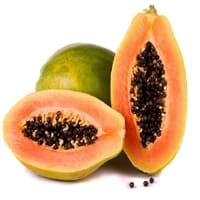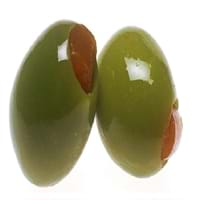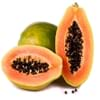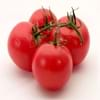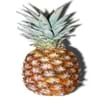Health Benefits
Arthritis prevention, Asthma treatment, Cancer prevention, Heart care, Prevents macular degeneration, Prevents rheumatoid
Cancer prevention, Helps in cartilage regeneration, Prevents macular degeneration, Treatment of alzheimer's disease
General Benefits
Anti-inflammatory properties, Boosts immune system, Digestive aid, Healing of wounds, Maintains healthy cholesterol level, Strengthens bones
Anti oxidant properties, Anti-inflammatory properties, Boosts immune system, Controls blood pressure, Digestive aid, Maintains healthy cholesterol level
Skin Benefits
Anti-aging benefits, Hydrates skin, Skin revitalization, Treatment of acne, Treatment of dark spots
Hydrates skin, Skin rejuvenation, Treatment of skin diseases
Hair Benefits
Good conditioner, Promotes longer and healthier hair, Softening mask, Treatment of dandruff
Acts as moisturizer, Good conditioner, Regulates hair growth
Allergy Symptoms
Abdominal pains, Carotenemia on excessive consumtion, Latex Allergy
NA
Side Effects
Allergic reaction, Skin problems, Possibly unsafe during pregnancy
Affects blood glucose levels, Dizziness, Stomach pain
Best Time to Eat
As a snack in the late afternoon, Don't consume at night and before bed, Don't eat after meal
Hardly eaten raw, Olive oil is consumed for many purposes.
Vitamin B5 (Pantothenic Acid)
Vitamin C (Ascorbic Acid)
Vitamin K (Phyllochinone)
Calories in Fresh Fruit with Peel
Not Available
Calories in Fresh Fruit without Peel
Not Available
Calories in Frozen Form
Not Available
Type
Melon, Tree fruit
Tree fruit
Season
All seasons
Spring, Summer
Varieties
Coorg Honey Dew, Pusa Dwarf, Pusa Giant, Pusa Majesty, Pusa Delicious, Pusa Dwarf, Solo, Ranchi, Taiwan-785 and Taiwan-786
Manzanillo, Sevillano, Mission, Ascolano, Barouni, Gordal, Rubra and Picholine
Color
Orange, Yellow
Black, Green, Purple, Yellow
Inside Color
Orange
Brown
Taste
Luscious, Sweet
Bitter
Origin
Mexico, Central America
Eastern Mediterranean Region
Soil Type
Rocky, Sandy, Well-drained
Well-drained
Climatic Conditions
Warm, Without frosts
Warm to hot climate
Facts about
- Papaya seeds show contraceptive effects in male monkeys.
- Their seeds are used as a replacement for black pepper in some nations due to peppery taste.
- Papaya is known by funny names like paw paw or papaw and the mamao.
- In ancient Greece, 1st eye shadow was made by adding olive oil in ground charcoal.
- The most expensive form of olive oil is Extra Virgin.
- Largest type of olive tree is known as donkey tree & smallest one is called bullet.
Other Countries
Brazil, Indonesia, Mexico, Nigeria
Algeria, Egypt, Greece, Italy, Morocco, Portugal, Syria, Tunisia, Turkey
Top Importer
United States of America
United States of America
Top Exporter
Mexico
Italy
Botanical Name
Carica papaya
Olea europaea
Synonym
Not Available
Not Available
Subkingdom
Tracheobionta
Tracheobionta
Division
Magnoliophyta
Magnoliophyta
Class
Magnoliopsida
Magnoliopsida
Subclass
Dillenhidae
Rosidae
Order
Brassicales
Lamiales
Family
Caricaceae
Oleaceae
Species
C. papaya
O. europaea
Generic Group
Papaya
Olive
Difference Between Papaya and Olive
We might think that Papaya and Olive are similar with respect to nutritional value and health benefits. But the nutrient content of both fruits is different. Papaya and Olive Facts such as their taste, shape, color, and size are also distinct. The difference between Papaya and Olive is explained here.
The amount of calories in 100 gm of fresh Papaya and Olive with peel is Not Available and 115.00 kcal and the amount of calories without peel is 43.00 kcal and Not Available respectively. Thus, Papaya and Olive belong to Low Calorie Fruits and High Calorie Fruits category.These fruits might or might not differ with respect to their scientific classification. The order of Papaya and Olive is Brassicales and Lamiales respectively. Papaya belongs to Caricaceae family and Olive belongs to Oleaceae family. Papaya belongs to Carica genus of C. papaya species and Olive belongs to Olea genus of O. europaea species. Beings plants, both fruits belong to Plantae Kingdom.
